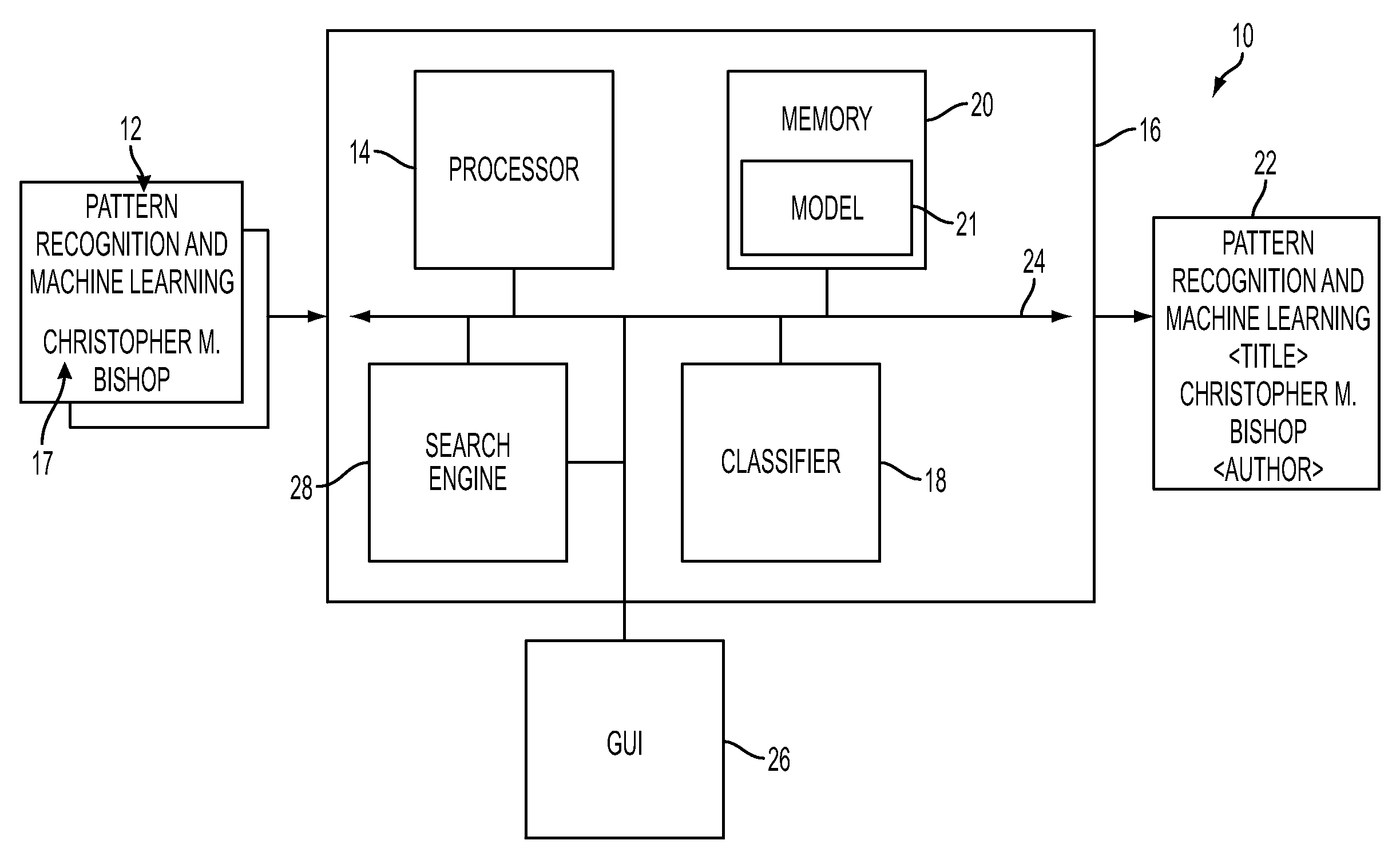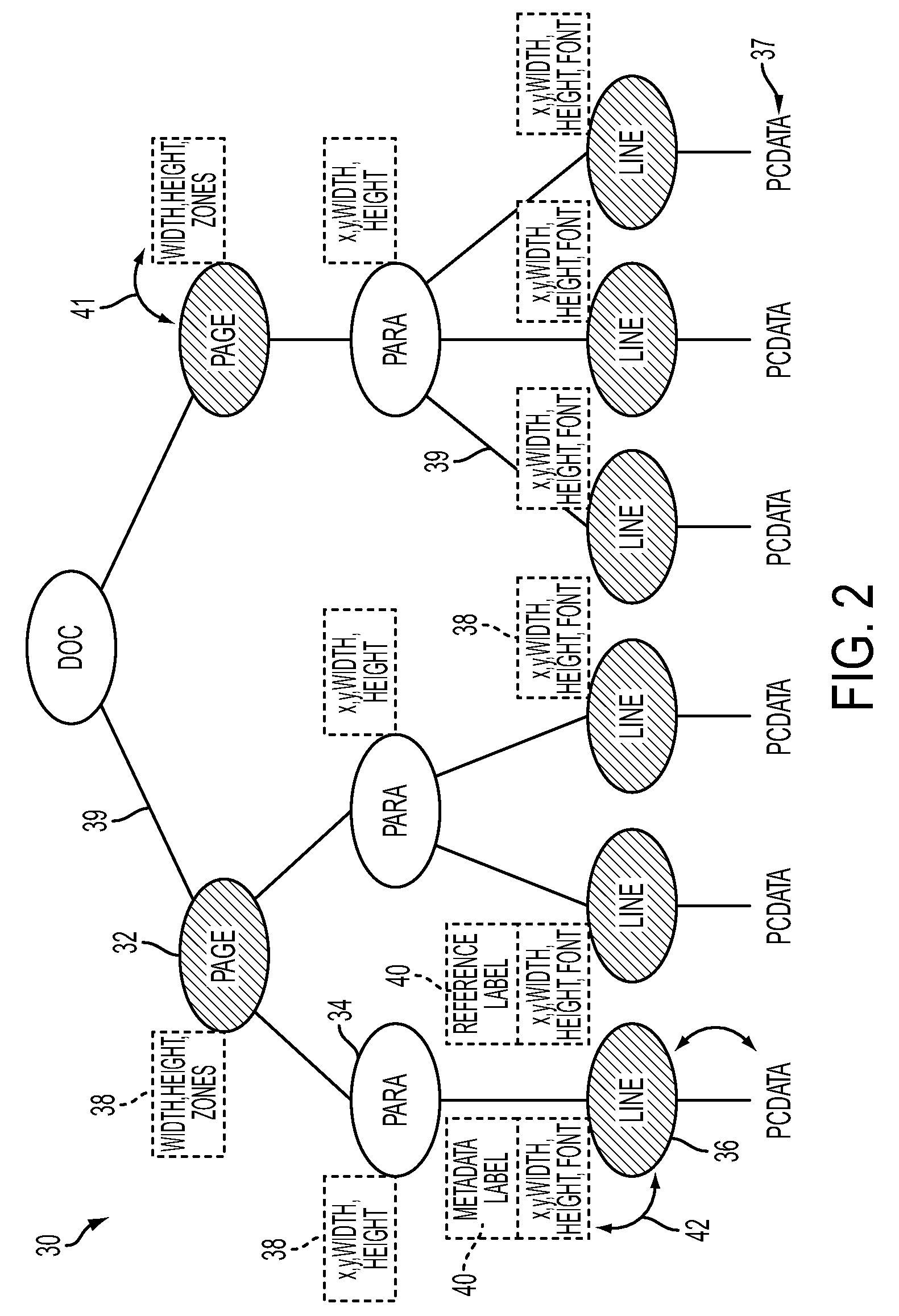Stacked generalization learning for document annotation
a generalization learning and document annotation technology, applied in the field of annotation of semistructured documents, can solve problems such as slow methods
- Summary
- Abstract
- Description
- Claims
- Application Information
AI Technical Summary
Benefits of technology
Problems solved by technology
Method used
Image
Examples
example
[0102]In this Example, the method employing stacked RDNs (referred to herein as Stacking) is compared to other methods. The lower bound in the evaluation may be considered to be the Basic or “Independent” method (also referred to as the Intrinsic method) given by Crf++: “Yet another CRF toolkit”, available at http: / crfpp.sourceforge.net / (hereinafter CRF++) where the dynamic features are ignored and the prediction models are trained using the static features only. As the upper bound for the stacking approximation, the “Exact” solution according to Berger (1996) may be considered. However, when the learning or inference of exact solutions is intractable because of the large size of input documents and / or complexity of dependency graphs, another upper bound may be considered for the stacking algorithms (“Upper” method). Here, the upper bound solution is one where an oracle is assumed to correctly predict the neighbor classes. In the exemplary embodiment, the oracle-based models are bu...
PUM
 Login to View More
Login to View More Abstract
Description
Claims
Application Information
 Login to View More
Login to View More - R&D
- Intellectual Property
- Life Sciences
- Materials
- Tech Scout
- Unparalleled Data Quality
- Higher Quality Content
- 60% Fewer Hallucinations
Browse by: Latest US Patents, China's latest patents, Technical Efficacy Thesaurus, Application Domain, Technology Topic, Popular Technical Reports.
© 2025 PatSnap. All rights reserved.Legal|Privacy policy|Modern Slavery Act Transparency Statement|Sitemap|About US| Contact US: help@patsnap.com



